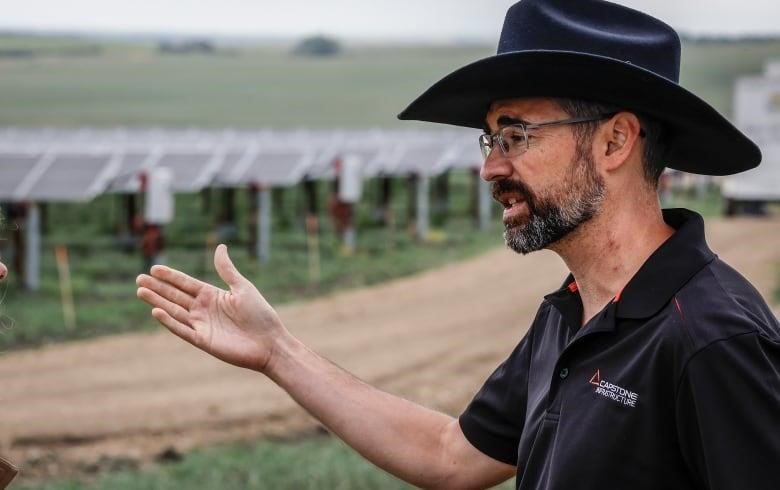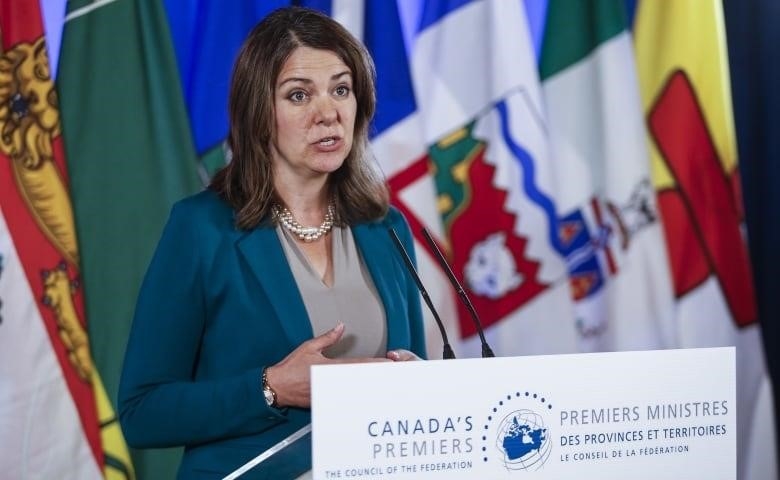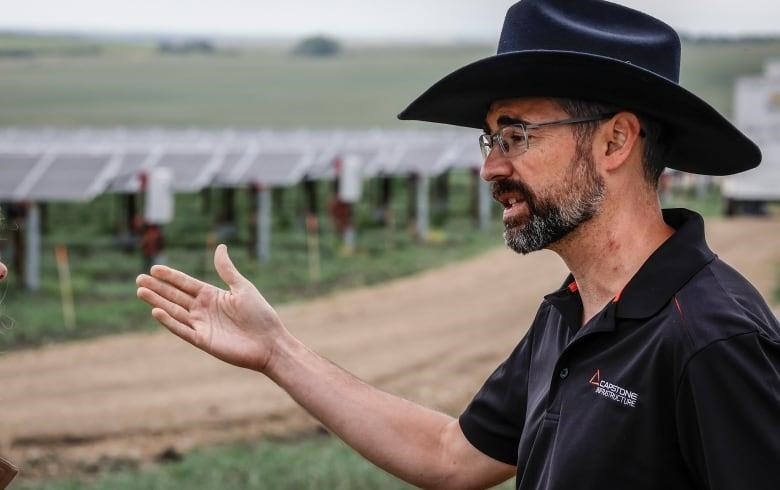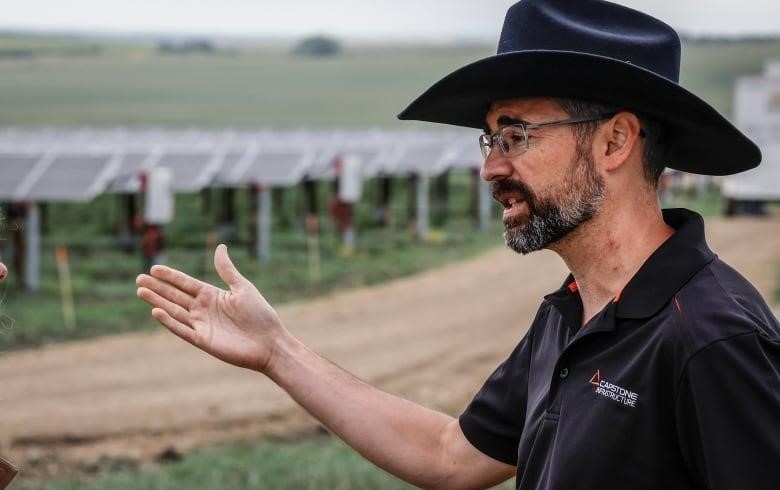
The provincial government doesn’t agree with the target date
In front of Alberta’s newest solar farm, Jonathan Wilkinson, the federal minister for natural resources, said on Tuesday that he still thinks the province can get its electricity grid to net zero by 2035, even though Premier Danielle Smith says it can’t be done.
Wilkinson said this in Starland County, Alberta, near Drumheller, in front of thousands of shiny solar panels that are part of the latest solar project to be connected to the electricity grid in the province.
Wilkinson said, “The federal government thinks it can be done” right after renewable energy company Capstone Infrastructure officially opened its 25 MW Michichi solar project, which will produce enough clean energy to offset about 30,000 metric tons of CO2 every year.
“But we also need to be willing to listen to what Alberta and Saskatchewan have to say and try to find ways to solve their problems, ideally before 2035.”
As part of its broad climate goals, the federal government plans to release soon a draft of its promised clean electricity regulations. The goal of these regulations is to make sure that Canada’s electricity grid emits no greenhouse gases at all by 2035.
Canada’s current electricity grid is more than 80% non-emitting, and it is possible to get rid of carbon emissions within the next 10 years in provinces with a lot of hydroelectric power.
But even though Alberta has promised to have net-zero greenhouse gas emissions by 2050, the province’s lack of hydroelectric power and heavy reliance on natural gas to make electricity means that its grid will have a harder time making the change than many others.
Saskatchewan has also said that a net-zero electricity grid by 2035 is not possible. Instead, it wants to reach that goal by 2050.

On Monday, Smith said that her government still thinks that any “too aggressive” federal rules about electricity would take away the province’s constitutional right to control its natural resources.
At a Stampede breakfast in Calgary, the premier said, “We’re not going to do anything that will hurt our economy or show that our oil and gas sector is going to be phased out.”
But Wilkinson said on Tuesday that Ottawa is showing it is willing to listen to Alberta’s concerns by agreeing to the province’s plan to set up a bilateral working group.
Wilkinson said that the working group would be made up of “senior people on both sides.” Its goal would be to get the federal government and the provinces to agree on how to reduce emissions, including how to green the electricity grid.
Wilkinson said that Alberta used to get most of its electricity from coal not too long ago. He said that the fact that the province will no longer use coal at all by next year is a huge accomplishment.

Wind and solar development are also booming in the province. More than 3,800 megawatts of wind and solar power are now installed in Alberta. Last year, Rystad Energy predicted that Alberta would have the most utility-scale wind and solar power installed in the country by the middle of the decade.
Still, more than 70% of the electricity that the province can make right now comes from sources that don’t grow back. Wilkinson said that his government knows that solar and wind power can only get Alberta so far.
“I would say that natural gas with carbon capture will still be talked about in Saskatchewan and Alberta,” he said.
“Small modular reactors and nuclear power will also be a part of the real world, even though it will take some time to get there.”

Wilkinson said that the goal of the working group will be to find out what technical and financial problems Alberta faces in getting to net-zero and how the federal government can help.
He said that Ottawa has already given a lot of money, but it might be willing to give even more to help the provinces finish.
“I would say that the federal government needs to be open to that conversation,” he said, adding that the most recent federal budget included money for an investment tax credit for electricity generation and inter-provincial transmission.
“We did that because we could see how big the problem was, and we didn’t think any of the provinces could afford what would be needed in the coming decades,” Wilkinson said.
“So we have put money on the table for those provinces that are willing to talk.” It’s possible we need to do more.”
In an interview on Tuesday at the solar site, David Eva, the CEO of Capstone Infrastructure, said that he also thought that Alberta could have net-zero electricity by 2035.
He said that in just a few short years, the cost of solar technology has gone down so much that it is now cheaper than fossil fuel generation. Many of Alberta’s traditional oil and gas companies are signing off-take agreements with renewable power companies to get their own electricity needs met.
“I believe it (net-zero) is possible,” Eva said.
“It’s a challenge, but at the rate we’re going, as long as we keep investing in the grid to connect these projects and as long as we keep getting support from all levels of government… I have no doubt that we will get there.”
